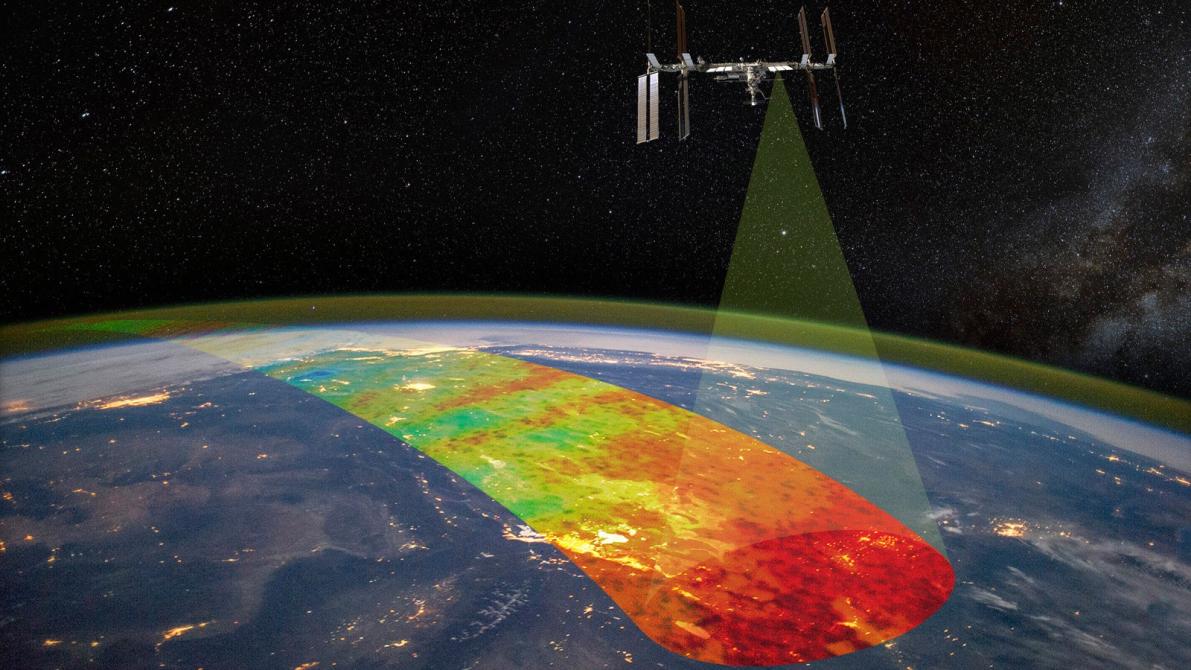November 23, 2023
Exploring Atmospheric Waves: NASA’s AWE Mission

Introduction:
- NASA is poised to launch the Atmospheric Waves Experiment (AWE), a groundbreaking venture aimed at delving into the phenomenon of ‘airglow’ to decipher the mysteries of space weather. This pioneering mission, under NASA’s Heliophysics Explorers Programme, seeks to unravel the intricate connections between terrestrial weather and the realm beyond.
Understanding AWE:
- The primary focus of the Atmospheric Waves Experiment is to explore the dynamic interplay between Earth’s lower atmospheric waves and the upper atmospheric conditions that influence space weather. Positioned aboard the International Space Station (ISS), this mission will observe and analyze the vibrant bands of light known as airglow from a unique vantage point above the planet.
Mission Objectives:
- AWE aims to decode the amalgamation of forces steering space weather in the upper atmosphere. Its key endeavor is to measure and comprehend the airglow phenomenon at the mesopause, located approximately 85 to 87 kilometers above Earth’s surface. This altitude offers an ideal vantage point to capture the faint yet vivid airglow in the infrared spectrum, providing unprecedented insights into its nature and behavior.
Instrumentation and Methodology:
- Central to the mission is the Advanced Mesospheric Temperature Mapper (ATMT), a sophisticated tool equipped onboard AWE. Comprising four telescopes functioning as an imaging radiometer, this instrument will meticulously scan the mesopause region. By capturing the brightness of specific wavelengths, scientists aim to create detailed temperature maps, unveiling the dynamics of airglow movement and its implications on the upper atmosphere and space weather.
Deciphering Airglow:
- Airglow, a subtle luminescence in Earth’s upper atmosphere, stems from the selective absorption of solar ultraviolet and X-radiation by air molecules and atoms. Most pronounced between 50 to 300 kilometers above the Earth’s surface, the brightest manifestations occur around 97 kilometers, contributing to the mesmerizing phenomenon observed from space.
Conclusion:
- The AWE mission promises an unprecedented opportunity to explore the enigmatic realm of airglow and its profound influence on space weather. Through meticulous observation and analysis, NASA’s pioneering endeavor aims to unravel the mysteries that link our terrestrial atmosphere to the cosmic forces shaping the space environment.
Gist of daily Article /The Hindu 17oct 2025
October 17, 2025
Daily Gist of the Hindu/Indian Express : 16 Oct 2025
October 16, 2025
Daily Gist of The Hindu/Indian Express: 6 Oct 2025
October 6, 2025
Daily Gist of Article /The Hindu /Indian Express: 24 Sep 2025
September 24, 2025
